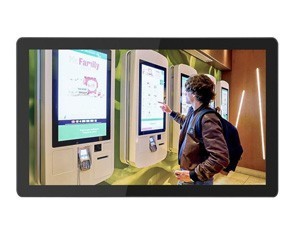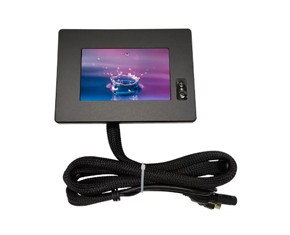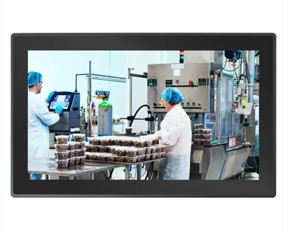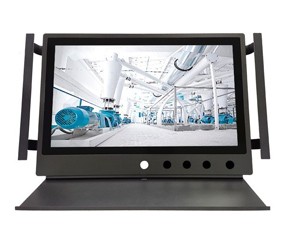Mar. 25, 2025
Imagine smoothly navigating menus on your Windows PC, zooming in on images with a simple touch, or even playing games—all with a touch screen. This tutorial will guide you through the process, step by step, along with helpful visuals. A resistive touch screen monitor is compatible with many devices and operating systems, ensuring versatility. It can interact with keyboards, respond to taps, and connect via a cable. Whether for work or play, the touch panel offers an intuitive, immersive experience that can transform how you engage with your digital world. Whether you choose resistive or capacitive touch screens, these features significantly improve your overall user experience.
In the following sections, we’ll cover the steps for installing and setting up a resistive touch screen monitor. The first step is to pin the monitor in place, followed by layering the resistive touch screen on top. Let’s dive in and see how the touch function can transform your digital experience with this innovative setup.
Proper installation is key to ensuring your system functions optimally. This guide will walk you through the necessary steps to install and set up a resistive touch screen on your display panel, using a pin.
The first step in installing your resistive touch screen is aligning its layers correctly. A resistive touch screen has two primary layers: the top layer, usually made of flexible plastic or glass, and the bottom layer, which contains conductive lines. Follow these steps for correct alignment:
Clean the display panel thoroughly to remove dust or debris.
Place the bottom layer of the touch screen onto the display, ensuring it covers the entire area evenly.
Carefully align the top layer with the bottom layer, matching corners and edges precisely.
Gently press on the corners and edges to secure the layers together.
By following these steps, you'll ensure that your resistive touch screen is aligned correctly for accurate inputs and smooth operation.
Once the layers are aligned, you’ll need to connect the touch screen controller to the display panel. The controller acts as the intermediary between the touch panel and the device, enabling smooth communication.
Locate the connector ports on both the controller and display panel.
Align the connectors properly by matching their shapes and positions.
Insert each connector into its respective port until securely seated.
Double-check the connections to ensure they’re properly aligned.
Properly connecting the controller guarantees reliable communication between the touch screen and your device, ensuring accurate touch responses.
After installation, calibrating your resistive touch screen ensures precise touch accuracy.
Open the calibration app or settings on your device.
Locate the touch screen calibration option and select it.
Follow the on-screen instructions to complete the calibration.
Perform multiple touches at various points on the screen during calibration to achieve accurate results.
Calibration ensures that your touch screen responds accurately, enhancing the user experience and minimizing input errors.
Resistive Touch Screen Panel PC
Before connecting an external touch screen monitor for flight simulators like MSFS (Microsoft Flight Simulator) or X-Plane, make sure your system meets the necessary hardware and software requirements. Visit the official websites for both simulators to check their minimum and recommended specs, including processor speed, RAM capacity, and graphics card specifications.
Connecting your touchscreen monitor is simple. Modern monitors typically support USB or HDMI connectivity.
Identify available ports on both your computer and the touchscreen monitor.
Plug one end of the USB cable into an available USB port on your computer.
Connect the other end to the monitor's USB port.
Locate the HDMI ports on both your computer and the monitor.
Insert the HDMI cable into the appropriate ports.
Once connected, power on both devices. Your computer should automatically detect the new monitor. If not, you may need to configure it manually in your operating system’s display settings.
After connecting your touchscreen monitor, configure the simulator software for touch control functionality.
Open MSFS or X-Plane.
Go to the settings menu in the software.
Find the input or control settings section.
Enable the touch control or touchscreen option.
Save the changes.
Once done, your external touchscreen monitor will be ready for use with the simulator. Now, you can interact with the simulator using touch gestures like tapping, swiping, and pinching.
If you experience display issues, such as glitches or incorrect colors, updating your graphics drivers often solves these problems. To do this:
Find the make and model of your graphics card.
Visit the manufacturer's website to locate the latest driver.
Download and install the driver according to their instructions.
If your resistive touch screen isn't responding as expected during flight simulations, adjust the touch sensitivity settings:
Open Control Panel on your computer.
Go to “Hardware and Sound” or “Devices and Printers.”
Select "Pen and Touch" or click on "Calibrate..."
Follow the instructions to fine-tune the sensitivity.
Verify Connection and Recognition
If your touch screen isn’t responding, check the connection:
Make sure all cables are securely plugged in.
Ensure any necessary adapters are in place.
Check Device Manager to see if the touchscreen is listed under “Human Interface Devices” or “Monitors.”
Congratulations on mastering the installation and setup of your resistive touch screen monitor! You've learned how to align the layers, connect the touch controller, calibrate the screen, set it up for simulators, and troubleshoot common issues. Now, you can enjoy an enhanced touch screen experience for all your tasks, from flight simulation to everyday computing.



Capacitive Vs Resistive Touch Screens: When to Choose?
Mar. 14, 2025

How to Choose Capacitive Touch Monitors
Dec. 27, 2024